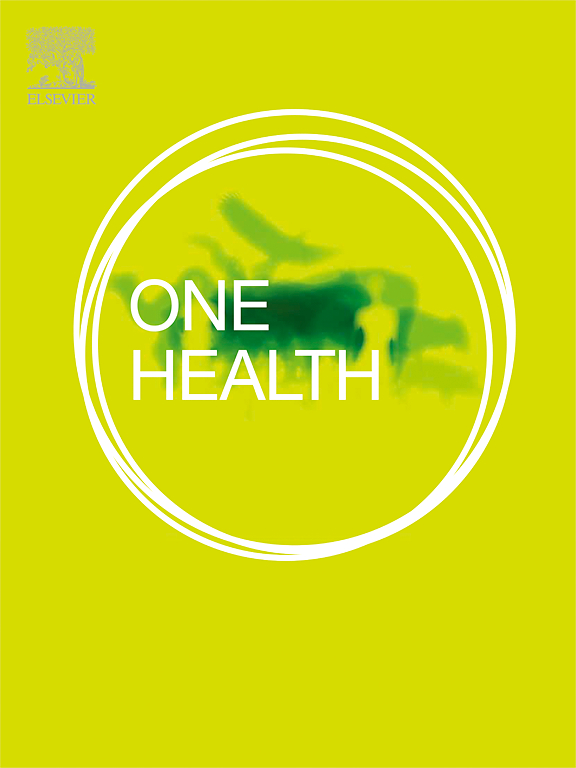High serological barriers may contribute to restricted Influenza-A-virus transmission between pigs and humans
IF 4.5
2区 医学
Q1 INFECTIOUS DISEASES
引用次数: 0
Abstract
Influenza A viruses (IAV) circulate in both humans and pigs, with bidirectional transmission potentially driving viral evolution. Despite frequent contact and genetic compatibility, observed cross-species transmission remains rare, suggesting the presence of unexplored or little-known barriers. The study investigated transmission dynamics and mechanisms restricting IAV spread at the human-swine interface in Germany. We analyzed 3070 porcine and 333 human nasal swabs from 135 swine farms via RT-qPCR and full-genome sequencing. Concurrently, we conducted serological surveys: 1) Children's sera (urban, no pig contact) for antibodies against circulating swine IAV, and 2) Swine sera for antibodies against human-adapted IAV. Molecular surveillance identified only one zooanthroponosis event and sporadic anthropozoonosis (primarily in children) despite swine IAV strains carrying zoonotic-propensity genetic markers (MxA resistance). Serologically, urban children without pig exposure exhibited marked neutralizing activity against swine IAV, whereas swine sera contained neutralizing antibodies against human IAV strains. Pre-existing cross-reactive immunity—evidenced by unexpected antibody prevalence in both species—creates a more complex interspecies barrier than genetic factors alone. This serological “shield” may critically limit IAV transmission between humans and pigs, reshaping our understanding of zoonotic risk.
高血清学屏障可能有助于限制甲型流感病毒在猪和人之间的传播
甲型流感病毒(IAV)在人类和猪中传播,双向传播可能推动病毒进化。尽管频繁的接触和遗传兼容性,观察到的跨物种传播仍然很少,这表明存在未被探索或鲜为人知的障碍。本研究调查了德国人猪界面禽流感病毒的传播动力学和限制机制。我们通过RT-qPCR和全基因组测序分析了来自135个猪场的3070只猪和333只人鼻拭子。同时,我们进行了血清学调查:1)儿童(城市,无猪接触)血清中抗循环猪流感病毒的抗体,2)猪血清中抗人适应猪流感病毒的抗体。尽管猪IAV毒株携带人畜共患病倾向遗传标记(MxA抗性),但分子监测只发现了一起人畜共患病事件和散发性人畜共患病(主要发生在儿童中)。血清学上,未接触猪的城市儿童对猪流感病毒表现出明显的中和活性,而猪血清中含有对人流感病毒株的中和抗体。预先存在的交叉反应性免疫——在两个物种中都有意想不到的抗体流行——比单独的遗传因素造成了更复杂的物种间屏障。这种血清学“屏障”可能严重限制人与猪之间的IAV传播,重塑我们对人畜共患风险的理解。
本文章由计算机程序翻译,如有差异,请以英文原文为准。
求助全文
约1分钟内获得全文
求助全文
来源期刊

One Health
Medicine-Infectious Diseases
CiteScore
8.10
自引率
4.00%
发文量
95
审稿时长
18 weeks
期刊介绍:
One Health - a Gold Open Access journal.
The mission of One Health is to provide a platform for rapid communication of high quality scientific knowledge on inter- and intra-species pathogen transmission, bringing together leading experts in virology, bacteriology, parasitology, mycology, vectors and vector-borne diseases, tropical health, veterinary sciences, pathology, immunology, food safety, mathematical modelling, epidemiology, public health research and emergency preparedness. As a Gold Open Access journal, a fee is payable on acceptance of the paper. Please see the Guide for Authors for more information.
Submissions to the following categories are welcome:
Virology,
Bacteriology,
Parasitology,
Mycology,
Vectors and vector-borne diseases,
Co-infections and co-morbidities,
Disease spatial surveillance,
Modelling,
Tropical Health,
Discovery,
Ecosystem Health,
Public Health.
 求助内容:
求助内容: 应助结果提醒方式:
应助结果提醒方式:


